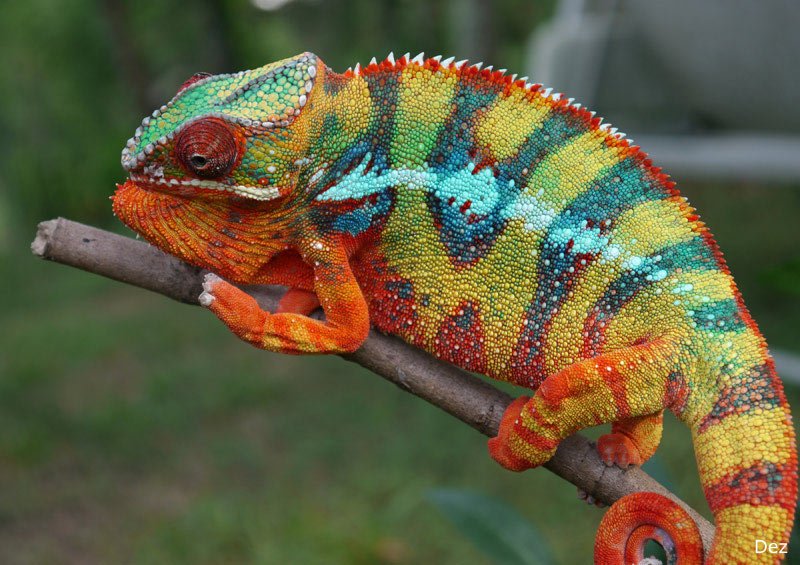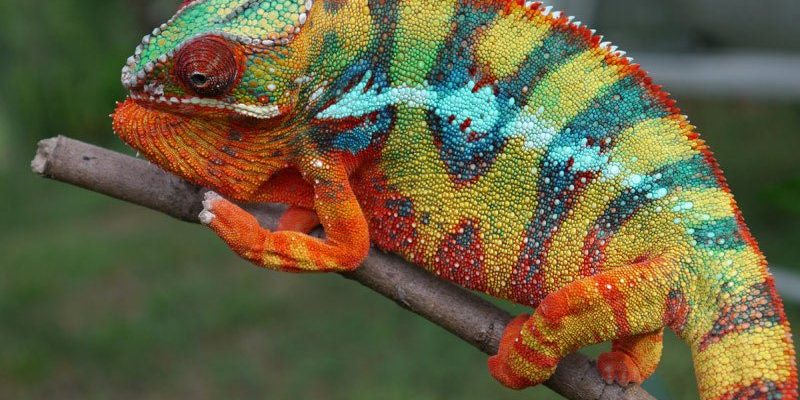
To put it simply, Panther Chameleons are native to Madagascar. This island is more than just a home; it’s a sanctuary for a variety of unique wildlife found nowhere else on Earth. As we delve deeper into their habitat, you’ll see how the lush environments of Madagascar play a crucial role in their survival and beauty. So, grab a cup of coffee, and let’s explore the fascinating world of Panther Chameleons and where they thrive!
Madagascar: The Heart of Panther Chameleon Habitat
Madagascar isn’t just a place on the map; it’s a vibrant ecosystem brimming with life. Panther Chameleons thrive in the island’s diverse climates, ranging from rainforests to dry forests. Picture this: tropical rainforests with towering trees, colorful flowers, and a canopy that’s home to all sorts of creatures. This rich biodiversity creates a perfect environment for Panther Chameleons to hunt and hide.
The different regions of Madagascar contribute to the various color morphs of these chameleons. For instance, the southeastern part, particularly the islands around Nosy Boraha, is known for producing strikingly vibrant blue and green chameleons. In contrast, the northern regions might showcase fiery reds and oranges. Isn’t it interesting how their surroundings influence their appearance?
Aside from that, the availability of food sources like insects and other small creatures is essential for their diet. Panther Chameleons primarily feast on crickets, locusts, and caterpillars. So, you can imagine how vital these habitats are—not just for survival but for their spectacular color displays too!
Regional Variations: The Southern vs. Northern Panther Chameleons
Now, let’s talk about the local flavors of Panther Chameleons. Depending on where they are in Madagascar, their colors and behaviors can vary significantly. In the south, you’ll find *Furcifer pardalis* that lean towards softer, pastel shades, often blending beautifully with the sandy landscapes. Here, they face a harsher climate, which might explain their muted colors.
On the flip side, the northern variants might sport bold reds and greens, which help them stand out in the lush foliage. This contrast is not just for looks—bright colors can signal health and vitality to potential mates. So, when you see a striking chameleon in the wild, remember it’s more than just a pretty face!
The differences in habitats also mean that these chameleons develop different survival tactics. While the ones in the south might spend more time burrowing or hiding during the hottest parts of the day, their northern cousins may be more active, taking full advantage of their vibrant environment.
Chameleons in Captivity: Breeding Outside Madagascar
While Panther Chameleons are primarily found in Madagascar, they have made their way into pet stores and breeding facilities worldwide. Keeping these beautiful lizards has become quite popular, so much so that many enthusiasts are trying their hand at breeding them outside their native habitat.
Breeders often aim to recreate the conditions of Madagascar to provide an optimal environment for these chameleons. This involves creating temperature gradients and humidity levels similar to their rainforests. If you’re thinking about having one as a pet, make sure you understand the responsibility involved. They require specific care to mimic their natural habitat, including the right diet and space to climb and explore.
Interestingly, breeding programs also help to conserve species that face habitat loss due to deforestation in Madagascar. So, supporting these programs can be a win-win situation: you get to appreciate the beauty of Panther Chameleons, and you’re also supporting efforts to protect them in their natural environment.
Threats to Panther Chameleons in Their Natural Habitat
While Panther Chameleons are stunning, they face numerous threats that put their populations at risk. Habitat destruction is one of the biggest issues, primarily caused by logging and agricultural expansion. As forests are cut down, chameleons lose their homes, making it harder for them to find food and mates.
You might be wondering how this affects their long-term survival. If their living spaces continue to shrink, there’s a risk that these beautiful creatures could become endangered. It’s a tough reality, but awareness is growing. Conservation groups are working hard to protect the remaining habitats and educate locals about the importance of preserving these unique reptiles.
Another threat is the illegal pet trade. Panther Chameleons are often captured and sold, which not only affects their populations in the wild but also leads to suffering when they’re kept in unsuitable conditions. Awareness is key here—choosing to adopt from reputable breeders rather than purchasing wild-caught individuals helps to protect these beautiful creatures.
Conservation Efforts for Panther Chameleons
Fortunately, there’s hope! Various organizations and groups are dedicated to conserving Panther Chameleons and their habitats. For instance, initiatives focus on reforestation efforts to restore areas that have been lost to logging and agriculture. These programs not only benefit chameleons but also the entire ecosystem.
Additionally, education plays a critical role in these conservation efforts. Many organizations work within local communities, teaching the importance of biodiversity and the unique role chameleons play in their environment. By fostering a sense of pride in their natural heritage, locals are more likely to protect the wildlife around them.
Supporting eco-tourism is another way to contribute. When tourists visit Madagascar to see these incredible creatures in their natural habitats, it brings money and jobs to the local communities. This often leads to a greater commitment to conservation, as protecting habitats becomes economically beneficial.
The Future of Panther Chameleons
As we look ahead, the future of Panther Chameleons depends largely on our actions today. By raising awareness and supporting conservation efforts, we can help ensure these beautiful lizards continue to thrive in their native Madagascar and beyond. Their remarkable adaptability and stunning beauty are testaments to the diverse life found on our planet.
If you’re fascinated by Panther Chameleons, consider learning more or even supporting organizations that work to protect them. You can make a difference—one chameleon at a time!
In summary, Panther Chameleons are not just found in Madagascar; they are a symbol of the island’s rich biodiversity. From their vibrant colors to their unique habitats, these lizards remind us of the importance of preserving our natural world. Whether you’re an aspiring chameleon owner or just an admirer, staying informed and supportive will help these incredible creatures flourish for generations to come.

